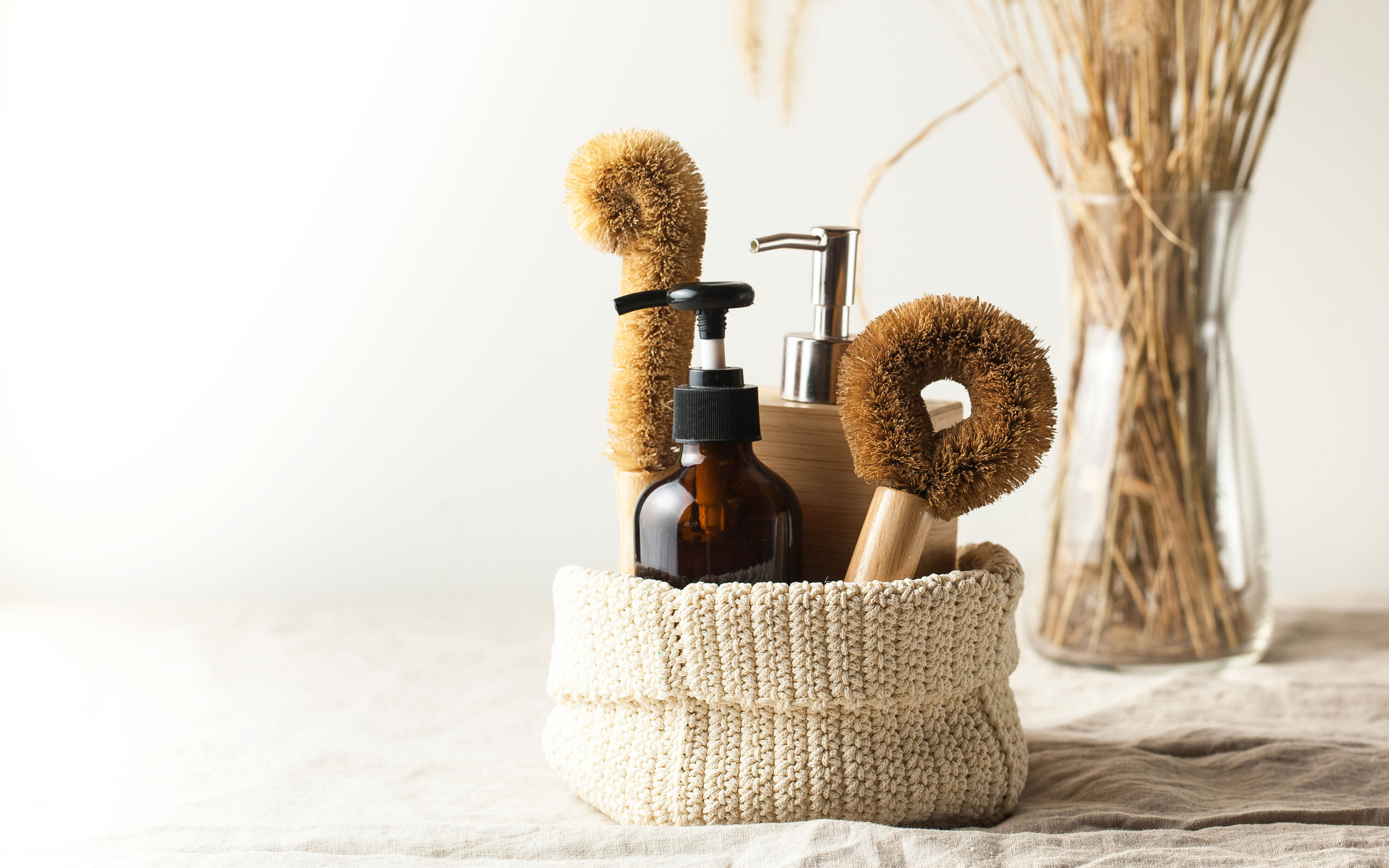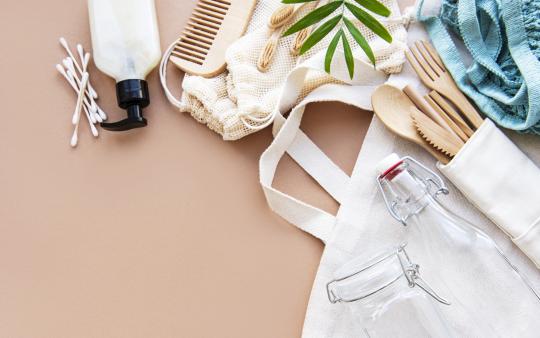Greenwashing. It’s not a trendy way to describe bathing in an eco-friendly bubble bath or an organic painting technique—it’s something more insidious. Greenwashing describes the false attribution of eco-friendly values to a product or service in an attempt to profit off of society’s growing environmental consciousness and take advantage of our confusion about legitimate marketing descriptors. A form of false advertising, greenwashed products and services can lead us to think we are making sustainable and healthy choices when we are actually supporting practices that are anything but.
Greenwashing Instructions
The term greenwashing is believed to have originated in the hotel industry in the 1960s, when hotels began asking guests to reuse towels as a means of reducing water and energy use, which also conveniently happened to be a great money-saver (on labour, restocking, and washing costs) for the hotels. A play on the term “whitewashing”, we understand greenwashing today to have limited involvement with laundry habits and instead to describe a business practice that uses eco-friendly sounding terms or descriptions or which performs small environmental actions and exaggerates them as translating into significant results. Vague but compelling labels like “organic”, “natural”, “sustainable”, “chemical or additive-free”, or “recyclable” appeal to the most eco of eco-shoppers, but it’s often just empty virtue-signaling from the marketing community.
A great example of this deceptive marketing is the BPA-free glass bottle. Glass has never contained BPAs to begin with, making this description absurdly superfluous but superficially seductive for those with potentially harmful chemicals on their radar. What’s more, the very same glass bottle labelled as having BPA-free glass may actually be laden with BPA in the plastic lid that tops the bottle! So, while the claim is true, the intent is to deliberately mislead.
Types of greenwashing can include:
- Misleading labels that exaggerate or obfuscate a product’s characteristics.
- Hidden trade-offs that focus on one feature of the product which may be environmentally forward, while minimizing another part which may be problematic.
- Irrelevant claims that advertise a product’s benefit that may have never been an issue (like BPA-free glass).
- Lesser of two evils, or the only other option, with somewhat more ethical practices, but still questionable in other ways.
GREENWASHING EXAMPLES BY INDUSTRY
Entire industries are guilty of greenwashing. Understanding more about a product’s life cycle can help with identification of false information on labels.
Food & Beverage
Many of us know that the vague term “natural” can vary from brand to brand throughout the United States and Canada. Many such claims can be made about a product, but the actual item often doesn’t pass some basic scrutiny when reviewing their green assertions and portrayals.
A CBC investigation explored 11 farmers’ markets in Ontario, Canada.1 Four duplicitous vendors shared wonderful backstories of their family-run farms, but the products themselves were found to have been purchased wholesale earlier that morning and was not the organic, homegrown output advertised.
Dairy Don’ts
Ever wonder about the wholesome, bucolic imagery on milk cartons? You don’t have to be a marketing expert to understand it doesn’t necessarily mean the milk inside came from happy cows. One company that routinely plasters “organic” on its labels and brags loudly about its sustainability reports is actually one of the largest conventional dairy farms in the world, saturating the market with many familiar and trusted brands. This same company has come under fire for unethical sourcing of ingredients, switching organic ingredients to conventional supply, unethically undercutting local small farms, and much, much more.
Watery Claims
We already know that a reusable bottle is best, but sometimes convenience or lack of options leaves us grabbing a disposable bottle of water instead. If a bottled water purchase is unavoidable, we are seduced into practicing harm-reduction by choosing a “better” bottle, such as a particular brand of natural spring water, which brands itself as this solution.
Made from rPet, a 100% recycled plastic, the label emphasizes the importance of bottle-to-bottle recycling.2 Though recycled plastic is an improvement, the fact is that only about 31 percent of disposable bottles actually get recycled, with the rest going into landfills.3 On top of the waste are the highly controversial sources of the water itself: many large corporations are draining creeks, streams, and rivers with dire results for nearby ecosystems.4,5
Do a deep dive on food certifications and their meanings at ecolabelindex.com.

KITCHEN & HOUSEHOLD
The kitchen is a particularly fertile area of focus for eco-conscious households and a hot bed of opportunity for spurious claims by deceitful manufacturers. Greenwashed kitchen goods range from dish soap and cleaners to bamboo and—one of the most commonly greenwashed items—the non-stick pan.
Flash in the Pan
While most pans have improved over those flaky Teflons of old, there are true green pans vs “greener” pans. Look for pans manufactured without PTFEs or PFOAs (polytetrafluoroethylene and perfluorooctanoic acid) at any part of the manufacturing process.6 Ceramic nonstick coatings, made from earth-based materials like silicon and earth or clay are best.
For a complete guide to green cookware visit ecoparent.ca/green-cookware
Taken to the Cleaners
Trusting brand names on faith alone can make you easily susceptible to greenwashing. Many items with the same brand label contain very different ingredients. One dish soap may tout itself as green but contains ingredients that could represent risks for asthma, allergy, or irritation.7 Aside from the contact risks, the real problem with the dish soap is what happens after you clean your dishes. Multiple ingredients pose a risk for aquatic toxicity including methylisothiazolinone, sodium laurel sulfate, and “fragrance”. It’s hard to support a soap’s eco-friendly status when it poses a severe threat to the oceans’ flora and fauna. This is an issue for many dish soaps, including one famously promoted wildlife cleaner-upper whose antibacterial option has been shown to host multiple environmentally harmful substances!8
More trustworthy anchor brands in green-cleaning aren’t immune either. While still far better than many commercial brands, one company has come under recent criticism for including 2-butoxyethanol in its cleaner,9 an ingredient that can cause irritation when absorbed through the skin. Additionally, for a product meant to be used diluted, it often comes full strength in a spray bottle, encouraging unconscious overuse by busy parents.
For more on choosing environmentally conscious alternatives, visit Healthy Homemade Cleaning Products.
Bamboozled
It is absolutely true that bamboo, technically a grass, is a renewable plant resource. To create bamboo “planks” or “wood” the plant is stripped down into component fibers which are sliced, planed, and boiled to remove starches that may attract pests, then the bamboo is glued back together.10And while the plant is sustainable, the glue is another story.
Unless you have thoroughly researched the brand of a bamboo spoon or pencil holder you have in your home, you’ve likely been the victim of greenwashing here too. Less eco-friendly companies often use a glue that contains formaldehyde. In addition, the growth of the bamboo industry has led to initiatives to cut down the natural forests for bamboo cultivation in some parts of the world. Poorly farmed bamboo can lead to monoculture forests (primarily one-plant forests) that negatively affect the surrounding area’s biodiversity.11
SUPPLEMENTS & HEALTH
People interested in natural health are highly targeted by unethical brands. One way to avoid this is to check with licensed naturopathic doctors across North America who are educated at accredited schools.12 They can provide you with ethically and correctly sourced supplements and treatments, as well as diagnose your health status so you’re not purchasing supplements you don’t really need.
Beyond greenwashing, there are also simply dishonest acts being committed by wellness companies assumed to be manufacturing products under strictly regulated controls. Amazon recently issued a warning about fake or knock-off supplements—blatant false advertising that could potentially endanger consumers.13 One well-known health retailer was found negligent in 2016 for failing to verify the contents of the supplements they sell.14 No matter how natural a label sounds or looks, always research the company’s sourcing and quality control practices.
Check with the Amazon Brand Registry online to verify sellers.
BEAUTY & THE BATHROOM
Brands have used greenwashing to target bath and beauty customers for years. It’s tough to find products you love, and tougher to let them go, but it’s also important to recognize that brands that include natural ingredients or don’t test on animals does not alone make the product eco-friendly overall.
Superficial Beauty
A leader in promoting fair trade in manufacturing, one organization is really focused more on making attractive products than eco-friendly items. The company uses natural ingredients in minuscule amounts but still adds loads of parabens and artificial perfumes to their concoctions. The products are then wrapped in disposable packages and irradiated to avoid microbes. Yes, microbes are bad, but so is uranium.15
In the nineties, consumers were convinced that plant-themed packaging and naturally named fragrances actually meant a closer connection to the Earth. One teen-fave brand created a killer ad campaign and a product full of sodium lauryl sulfate and propylene glycol.16 The combined ingredients can have both irritant and carcinogenic effects, not to mention the adverse consequences of washing them down the drain!
A Tissue of Lies
The toilet paper industry is notoriously not eco-friendly, but we generally think purchasing brands from more healthful retailers would be an improvement. As you might guess, we’ve been greenwashed again! A few of the reportedly eco versions scored a “D” on sustainability while, ironically, some “regular” bath tissue got an “A”. It should also be noted that while not perpetrating greenwashing, many of your name brand conventional toilet papers are made by virtue of cutting down North America boreal forests.
The Environmental Working Group’s Skin Deep app can help you audit your bathroom and beauty counter (ewg.org/skindeep/), and the Natural Resources Defense Council (NRDC) rates toilet paper sustainability from A to F in The Issue with Tissue.17

ARCHITECTURE & BUILDING
As the demand for green building materials and construction practices increases, greenwashed building providers continue to try and remarket their products to meet these demands. In a study describing the “Sins of Greenwashing”18, Scot Case of TerraChoice Environmental Marketing explains how companies might make irrelevant claims. A common example are boasts of foam insulation being CFC-free. This claim is nonsensical, since CFCs have been banned since 1978, which means anything manufactured since then must be CFC-free anyway!19 Like natural and organics claims in the food industry, building products may also claim to be EnergyStar when there is no official certification and they aren’t listed in the EnergyStar directory.20
Clear the Deck
Composite decking provides a different kind of greenwashing example. It’s true that composites made of wood scrap and plastic are reusing material that would otherwise go to waste and that their long life means less frequent replacement.21 However, once these hybrid products have outlived their use, their mixed material composition means that they cannot be recycled and can only end up in a landfill. In addition, there are environmental concerns about the construction of these decks since building creates more of this hybrid sawdust filled with plastics. The average deck produces about eight pounds of dust that mostly flies off into the wind, affecting birds, fish, and food chains nearby, creating an argument in favour of sustainably harvested natural wood.
Verify a building’s green status by looking for an LEED certification.22 If purchasing individual home or business items, check for an EnergyStar rating.23
APPAREL
We’ve long been aware of ethical concerns in the manufacturing of apparel. Beyond the horror stories of sweatshops and child labor, there are many companies seeking to cash in on our growing consumer consciousness. Some will advertise sustainable ideas like using discarded fabric (called deadstock) or upcycled and recycled materials. Items will be advertised as made to order using fair trade labour and a lowered carbon and water footprint, although the veracity of these claims is not always upheld.24 Consumers want clothes with a conscience and brands are rushing to deliver.
For more on alternative fashion choices that keep the planet in mind, check out What is Sustainable Fashion?
Compare and Contrast
If you want to know about a brand that’s been absolutely rockin’ the eco-ethics, look no further than Patagonia. They started experimenting with recycled materials back in 1995, long before it was mainstream cool, and they haven’t stopped their eco-forward approach since. However, not all brands have such clearly defined ethics. One has worked to improve its transparency and accountability over the years, but still can’t seem to extract itself from fast, disposable fashion and offers inconsistent information on garment production. It’s been known to quickly walk back larger ethics promises, leading to a lack of trust in its genuine commitment to sustainability.25
Explore the transparency of your apparel with the non-profit Fashion Revolution’s Transparency Index online.26
Leather Faux-Pas
Vegan leather allows us to practice harm-reduction by not requiring an animal’s life and death to create a durable, flexible covering. The vegan option avoids animal cruelty as well as toxic tanning agents. However, if you are opting for vegan leather products specifically for its lack of harm to animals, don’t neglect to consider what happens once the product is discarded.
Vegan leather is often far less durable than traditional leather, and when it breaks down it disintegrates into microplastics,27which are widely recognized for their potential harm to both humans and the marine food web. This is because many vegan leathers are made with PVC and polyurethane and involve a significant amount of fossil fuels.28 The exact effects depend on the concentration of microplastics in the water, the chemical composition of those plastics, and more—not exactly what you were hoping for in a “greener” product.29
Plant-based versions of vegan leathers are currently in development—stay tuned!30
TIPS TO HELP YOU AVOID GREENWASHED PRODUCTS
Avoiding minor greenwashing is a lot like trying to find 100 percent carbon-neutral products: possible, but not necessarily practical for the average consumer’s time, expertise, or budget. Instead, we can employ the same philosophy that the Environmental Working Group provides us with the “Dirty Dozen” and the “Clean Fifteen”.
Jolene Roberts, parent and eco-store owner, describes her process for sourcing goods, both for her home and her business. “It tends to be a long process and more challenging when you are looking at a product from a large corporation versus an independently owned small business.” She goes on to add, “In my experience, smaller brands are more transparent about why their product is better for you and the environment, they tend to also list out which ingredients are and are not in their product, and where their materials are sourced—local or not—and why they chose them.” Roberts lets the following factors guide her through her decisions:
Support Small
If you can get access to how a company operates and sources its products, you can make a more educated decision about whether or not you wish to purchase that product.
Think Local
What is the carbon footprint? If you can, look at how far an item needs to travel or how much energy is used in basic production. If you could get the same product on the West Coast sourced from Denver or Toronto, you can narrow down your choice.
Be Critical
Avoid the worst offenders and think carefully when purchasing anything with eco-friendly claims. Look closely at the product you want to purchase. Is it poorly made and disposable? What materials and ingredients were used to create the item?
Go Surfing
Is this product rated on any reputable review site? Check consumer protectors like the Environmental Working Group or other industry watchdogs.
Reduce Waste
What happens when you are done? When you have finished with a product, where does it go and what happens to the packaging? Will the item be resalable or recyclable? Can you refill or reuse the container? Will the item end up in a landfill or potentially harm wildlife?
The easiest way to avoid greenwashed products is the same way you choose the right fresh produce: Do your research and find a list of brands and items that are safe and a list of products to avoid. Stick to these for fast decisions and add new items to your lists one by one as you have time. Greenwashing wants to take advantage of your conscience and your presumed lack of knowledge, but instead let your consumer savvy clap back at greenwashing with ethical, sustainable purchases.
You may also enjoy: How To Green Your Spring Clean, What is Sustainable Fashion?, and How to Find Authentically Healthy Food Products.
For references visit ecoparent.ca/extras/WIN20.









